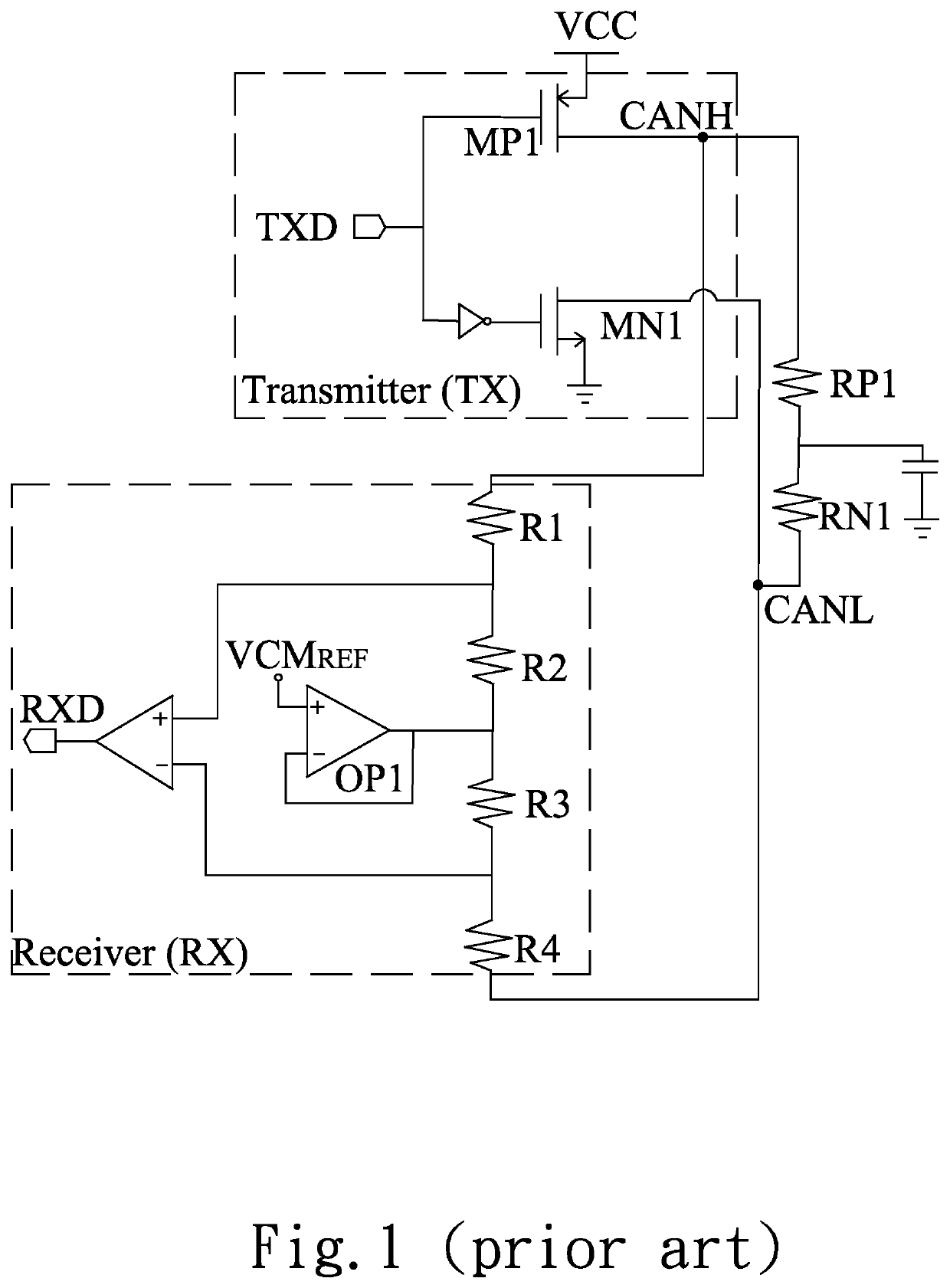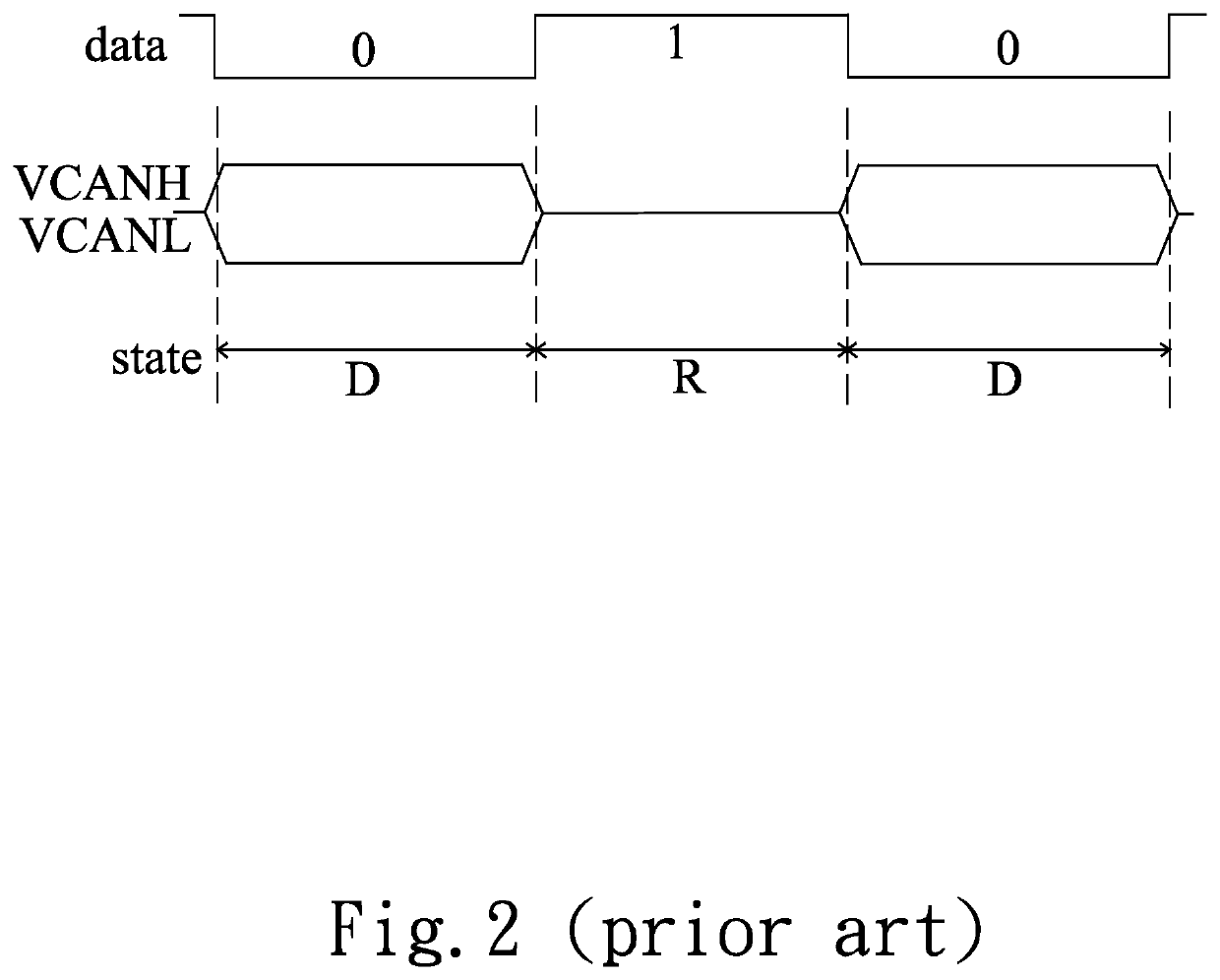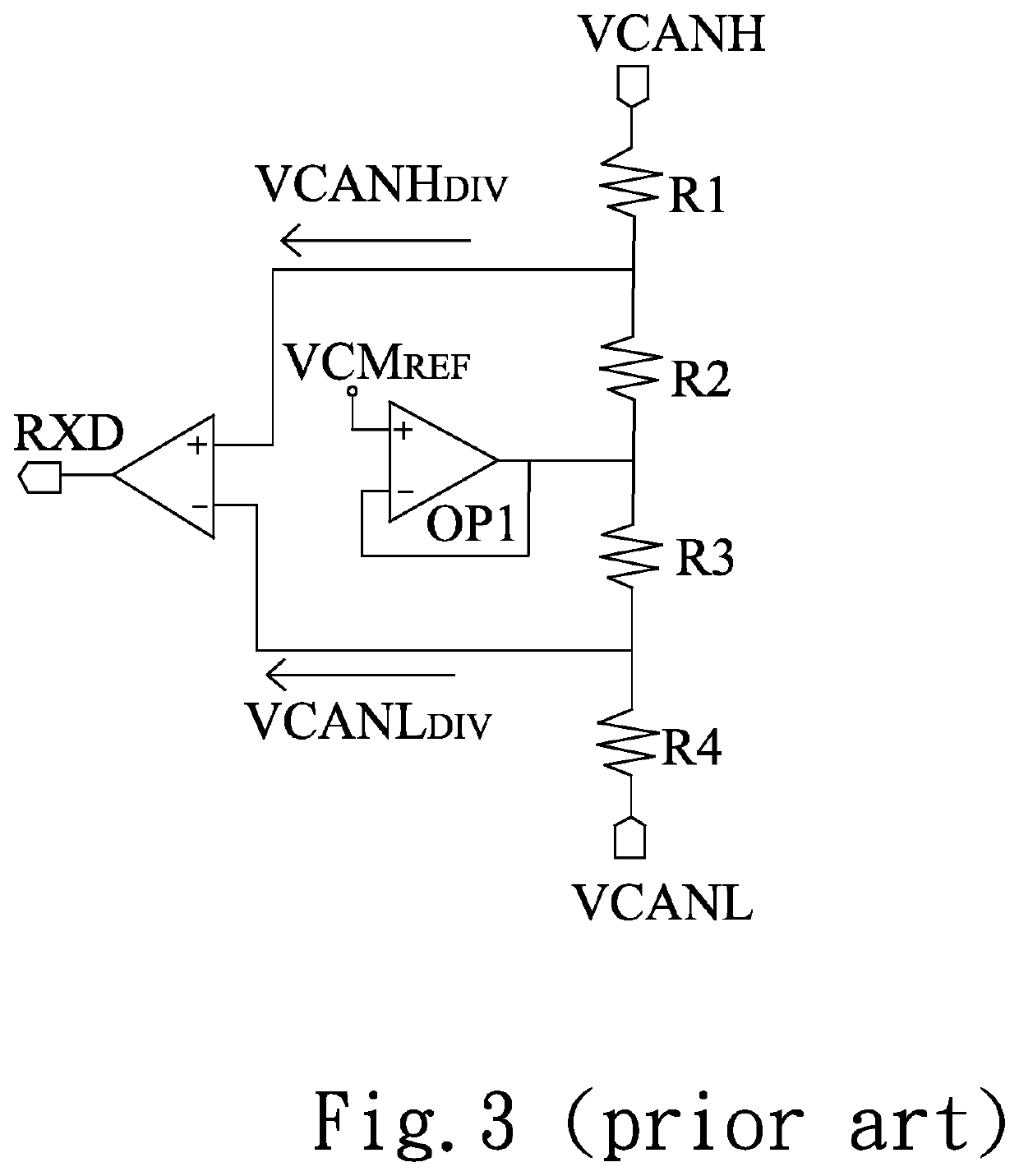Receiver circuit with input common mode voltage sensing
a common-mode voltage sensing and receiver circuit technology, applied in the field of receiver circuits, can solve problems such as increasing circuit complexity, and achieve the effect of increasing circuit complexity
- Summary
- Abstract
- Description
- Claims
- Application Information
AI Technical Summary
Benefits of technology
Problems solved by technology
Method used
Image
Examples
first embodiment
[0067]FIG. 6 shows the voltage diagram of the sense output voltage VSENSE_O of the common mode voltage sensor in accordance with the present invention. From FIG. 6, it shows that the common mode voltage sensor 24 of the present invention determines:
[0068]if {½*[VCANHDIV+VCANLDIV]}>{VCT+VTH_SEN}, then the sense output voltage VSENSE_O is set to a ground voltage GND; and
[0069]if {½*[VCANHDIV+VCANLDIV]}TH_SEN}, then the sense output voltage VSENSE_O is set to a power source voltage VCC, wherein VTH_SEN is a preset threshold offset value;
[0070]otherwise if {VCT−VTH_SEN}DIV+VCANLDIV]}TH_SEN}, the sense output voltage VSENSE_O is equal to the reference voltage source VCMREF.
[0071]FIG. 7 shows a schematic diagram of the receiver circuit with input common mode voltage sensing in accordance with the first embodiment of the present invention, which is applied to a transceiver integration circuit of the controller area network. The CAN transceiver integration circuit further comprises a transm...
second embodiment
[0110]The sense output voltage VSENSE_O of the common mode voltage sensor in accordance with such the present invention is illustrated as shown in FIG. 11. Therefore, as long as the voltage of (maximum input voltage of the first output amplifier Amp1-VCEQ2,3) is designed to be greater than 3.5V (derived from FIG. 6), compare to the prior art in which complex and high-cost dual path receiving amplifiers are needed, the receiver circuit of the present invention only needs to employ one receiving amplifier 26a and a common mode BUS ranging from +50V to −50V can be received.
[0111]In another aspect, please refer to FIG. 12A and FIG. 12B, which shows a detailed circuit diagram for implementing the receiver circuit with input common mode voltage sensing in accordance with a third embodiment of the present invention. FIG. 12B shows another variation embodiment of the receiving amplifier according to the third embodiment of the present invention in FIG. 12A. In such a third embodiment of the...
third embodiment
[0116]The sense output voltage VSENSE_O of the common mode voltage sensor in accordance with such the present invention is illustrated as shown in FIG. 13. Therefore, as long as the voltage of (minimum input voltage of the second output amplifier Amp2+VCEQ6,7) is designed to be less than 1.5V (derived from FIG. 6), compare to the prior art in which complex and high-cost dual path receiving amplifiers are needed, the receiver circuit of the present invention only needs to employ one receiving amplifier 26b and a common mode BUS ranging from +50V to −50V can be received.
[0117]As a result, as compared to the prior design, it is believed that by employing the above mentioned embodiments the present invention has disclosed, the receiver circuit for controller area network (CAN) is able to have the ability to receive differential signal with wide input common mode range (−50V to +50V) that exceeds the typical CAN supply voltage (0 to 5V), without using extra special designed receiving amp...
PUM
 Login to View More
Login to View More Abstract
Description
Claims
Application Information
 Login to View More
Login to View More - R&D
- Intellectual Property
- Life Sciences
- Materials
- Tech Scout
- Unparalleled Data Quality
- Higher Quality Content
- 60% Fewer Hallucinations
Browse by: Latest US Patents, China's latest patents, Technical Efficacy Thesaurus, Application Domain, Technology Topic, Popular Technical Reports.
© 2025 PatSnap. All rights reserved.Legal|Privacy policy|Modern Slavery Act Transparency Statement|Sitemap|About US| Contact US: help@patsnap.com



